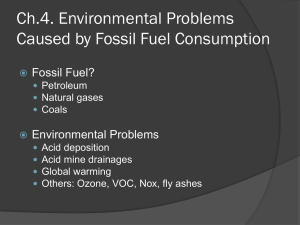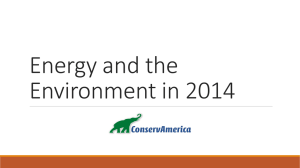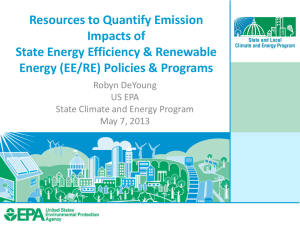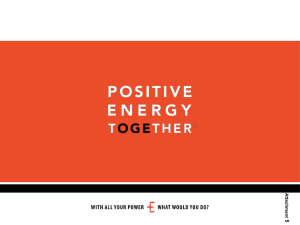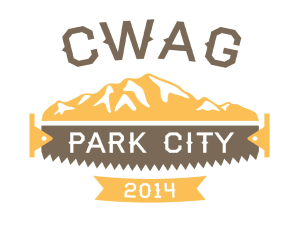so2 area designations - State/Local Air Pollution Control Agencies
advertisement
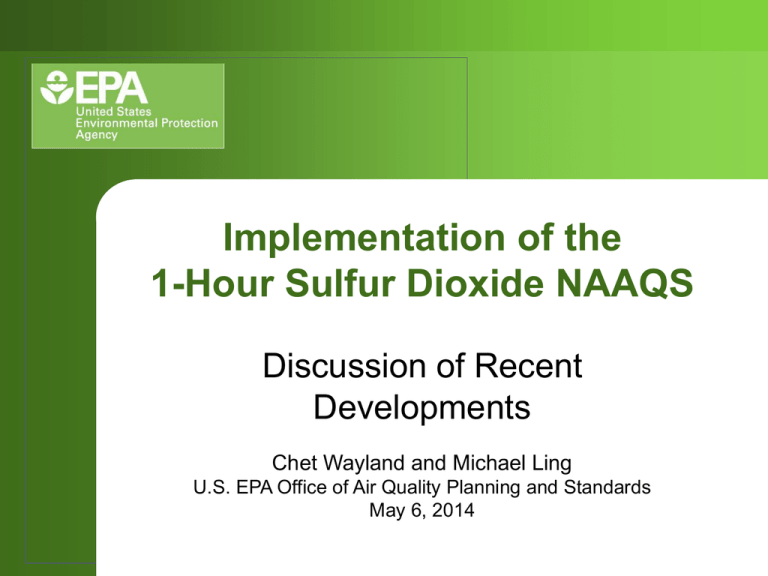
Implementation of the 1-Hour Sulfur Dioxide NAAQS Discussion of Recent Developments Chet Wayland and Michael Ling U.S. EPA Office of Air Quality Planning and Standards May 6, 2014 1 Part I SO2 AREA DESIGNATIONS 2 SO2 Area Designations The challenge: Current scope of SO2 monitoring is limited Many of the existing monitors are not located to characterize maximum concentrations and sourceoriented impacts Additional monitoring resources are also limited Where feasible, it is appropriate for EPA to develop reasonable approaches to determining whether public health is being protected in areas without monitored violations Some stakeholders have alleged NAAQS violations in certain monitored and unmonitored areas based on modeling they have done 3 SO2 Area Designations The EPA response – after extensive stakeholder consultation SO2 Area Designations & Implementation Strategy For SO2, appropriate modeling can help meet these challenges. Modeling has been used to characterize air quality for SO2 designations and SIP adequacy purposes. It allows for characterization of air quality around sources where monitoring is impractical or inadequate The application of modeling to characterize actual air quality is different from its familiar predictive applications. Actuals based modeling is appropriate for this purpose. The EPA will identify by rule sources/areas where characterization of air quality is a priority (similar to monitoring network design) States will characterize these sources using a “dual-pathway” approach (i.e., monitoring and/or actuals modeling) EPA and States will use this characterization information to complete SO2 designations on an expeditious schedule This strategy gave rise to the proposed SO2 Data Requirements Rule and the Modeling/Monitoring TADs 4 SO2 Data Requirements Rule Proposed SO2 Data Requirements Rule (DRR) Signed on April 17, 2014; pending FR publication 60 day public comment period (docket EPA-HQ-OAR-2013-0711) Final rule expected in late 2014 Webinar for States coming soon Elements of the SO2 DRR proposal 5 Expected implementation timeline / deadlines for state submittals Source threshold options Incentives for enforceable emission limits to avoid nonattainment designation Ongoing assessment of air quality for areas designated “attainment” Expected Implementation Timeline: SO2 DRR Proposal Late 2014: EPA issues final rule Jan. 2016: Air agency: (1) identifies sources to be characterized with monitoring data; and (2) provides modeling protocol for other sources July 2016: Air agency updates annual air quality monitoring plan Jan. 2017: Dec. 2017: EPA intends to designate areas not installing new monitors 6 Designations based on: modeling data, properly sited pre-existing monitors, areas having no sources Early 2020: New monitoring sites have 3 years of data; air agency submits monitoring data New monitoring sites operational in January 2017 for “monitoring” areas Air agency submits modeling analyses for “modeling” areas (i.e., areas above threshold for which they are not installing new monitors) Air agency can submit boundary recommendations for all areas except those relying on new monitoring data (in future) Air agency can submit boundary recommendations for monitored areas Dec. 2020: EPA intends to designate areas for rest of country Source Threshold Options Threshold For SO2 Sources Option Inside CBSAs Greater than 1M Outside CBSAs Greater than 1M Number of Sources** Percent of National Emissions† Plus Sources In Designated Nonattainment Areas‡ Total Source Coverage 496 323 211 Total Annual Emissions Coverage 1* 1,000 TPY 2,000 TPY 447 75 % 47 90 % 2 2,000 TPY 5,000 TPY 271 66 % 47 82 % 3 3,000 TPY 10,000 TPY 159 54 % 47 69 % * Preferred option. ** These do not include sources located in nonattainment areas designated in 2013. † Total SO2 emissions in 2011 were 5.8 million tons. ‡ There are 53 sources with annual emissions greater than 1,000 tpy in nonattainment areas designated in 2013. EPA preference is Option 1 “90% emissions” option discussed in May 2012 white paper and stakeholder meetings Minimum monitoring requirement for source-oriented lead NAAQS addresses 90% of the stationary source emissions Many states supported a threshold of 2,000 tpy 2013 designations generally contain sources above these thresholds No state would have more than 32 sources Close to 10% of the target sources were included in 2013 area designations 7 8 Incentives for Enforceable Emission Limits to Avoid Nonattainment Designation Air agencies can avoid nonattainment designation for certain areas by working with sources to establish permanent and enforceable emission limitations that show attainment with the SO2 NAAQS through modeling prior to round of designations in 2017 9 Emission limits would need to be incorporated into the SIP (e.g. through sourcespecific SIP/TIP revision, minor NSR permit, consent decree, etc. that gets adopted into the SIP) Can take into consideration emission reduction measures that will be implemented for Mercury and Air Toxics Standard (MATS) and other rules Ongoing Assessment of Air Quality for Areas Designated “Attainment” If areas are designated “attainment” after states provide monitoring or modeling data, states will be required to verify ongoing attainment Monitors deployed to meet the requirements of this rule in general must continue operation. However, the rule proposes that a monitor may be shut down if it meets certain criteria, including: 1. 2. Two proposed options: if design value is below 50% of standard; if design value is below 80% of standard. Modeled areas For other pollutants, monitors are available to track emissions in the future, but this will not be true for SO2 where state chooses modeling option Three options are proposed for ongoing assessment of attainment 1. 2. 3. 10 Air agency assesses emissions annually, conducts modeling every 3 years Air agency assesses emissions annually; if total SO2 emissions increase, air agency recommends whether more modeling is needed; RA considers case-bycase Air agency conducts screening modeling every 3 years SO2 Modeling/Monitoring TADs To assist with the modeling and monitoring called for by the DRR, EPA also issued Technical Assistance Documents for both modeling and monitoring Key Features: Each TAD provides detailed approaches to characterizing air quality in an area around SO2 emissions sources These documents have undergone stakeholder review and were posted on the SO2 implementation website on January 7, 2014 for use in commenting on the proposed DRR. 11 SO2 Modeling/Monitoring TADs Modeling TAD Provides details on modeling with actual emissions data to provide a design value for an area around emissions sources that is to be used as a surrogate for ambient monitoring data Provides recommendations on approaches for determining sources to model, meteorological data, and background concentrations Recommended model in most cases will be AERMOD Monitoring TAD Provides several approaches on how to determine appropriate locations to monitor for peak, ambient SO2 concentrations around an SO2 emissions source. Approaches include the use of modeling, exploratory monitoring, and weight of evidence approaches to inform monitor placement 12 Designations Deadline Suits The designations timelines using the data from the DRR are expeditious, but the deadline for EPA to complete these designations has already passed. Deadline suits were filed by Sierra Club/NRDC and several states requesting court to order EPA to issue final designations for all remaining areas with timeframes ranging from a couple months to 2 years from date of order EPA prefers the orderly approach of the DRR and ensuing designations process and has expressed that in its brief filed April 21, 2013 (in U.S. District Court, Northern District of California). However, states should be aware that these lawsuits may result in some or all of these designations needing to be done sooner. In that event, EPA still plans to carry out the DRR to assure air quality is adequately characterized for purposes of designation/redesignation (analogous to monitoring network) 13 Part II SO2 ATTAINMENT PLANNING 14 SO2 Attainment Planning Initial nonattainment area designations, based on violating monitors, were effective October 4, 2013 29 areas in 16 states designated Attainment plans due April 2015; Latest approvable attainment date October 2018 Judicial challenges filed for three areas designated NA and regarding EPA’s approach to designations in general 1-hr SO2 NAAQS Nonattainment SIP Elements Guidance Objective is to provide assistance to areas developing SIPs for current (and future) nonattainment areas Guidance was issued on April 23, 2014 Webinar for air agencies was held on May 1, 2014 15 Key Issues In SO2 Guidance As the Webinar covered in detail, the guidance addresses numerous issues. Key issues include the following: 1. Allowance for longer averaging times for emissions limits under the 1-hour standard (and discussion of safeguards/analytical approaches to assure attainment when using such limits) 2. Availability of a Clean Data Policy for SO2 3. Clarification of modeling domain for attainment demonstration and consideration of sources outside the area 4. Timing of implementation of control measures 5. Attainment determination (role of modeling and monitoring) 6. Taking credit for federal measures in the SIP 16 Overview of Averaging Time Issue The new SO2 guidance supports use of averaging times from 1 hr up to 30 days. Averaging times generally influence the stringency of a limit. Generally, a 30day average limit is less stringent than a 1-hr limit at the same level. Once the appropriate 1-hr limit is identified, the guidance advises states wishing to apply a longer term average limit to apply a downward adjustment of the limit, to establish a limit with comparable stringency to the corresponding 1-hr limit that would provide for attainment. With this downward adjustment of the limit, EPA believes that elevated emissions will be sufficiently rare that violations are very unlikely to occur. The guidance provides example calculations and discussion of how comparably stringent limits may be determined. Especially for sources that will use emission control equipment, the guidance also advises adopting supplemental limits to constrain the periods of elevated emissions that can occur with a longer term limit (e.g., requirements for scrubber operation or limits on time and/or magnitude of “emission spikes”) 17 Analysis of Averaging Time Approach Appendix B of the guidance describes analyses conducted to assess air quality impacts of use of long term average limits EPA analyzed an example facility with two example control strategies One emission data set reflected use of FGD; Other data set reflected low S coal Modeling yielded a critical emission value, then an adjusted 30-day limit was determined using each emission data set Each emission data set was scaled to just show compliance with the 30-day limit The FGD run estimated a design value of 46 ppb. The low S coal run estimated a design value of 52 ppb. Additional analyses, 1) using 100 randomly reassigned emissions data, and 2) using single years of emissions data to characterize emission variability over a 5-year period of meteorology, yielded similar results (50 to 58 ppb in analysis 1, and 39 to 52 ppb in analysis 2) Appendix C shows sample calculations of adjusted long term limits. Appendix D shows typical EGU adjustment factors 18 Clean Data Policy for SO2 Criteria for a “clean data determination” for SO2: (1) Modeling, using actual emissions data, would need to show attainment in the area and all monitors in the area would need to show attainment, or (2) EPA could use monitoring data alone to determine attainment for an area if the monitors in the area are determined to be located in the area of maximum concentration. Regulatory requirements suspended under the “Clean Data Policy”: The SIP requirements that would be suspended under the policy are the following: RFP Attainment demonstration Contingency Measures Air agencies would no longer be required to submit the aforementioned SIP requirements “for so long as the affected area continues to attain the standard” 19

